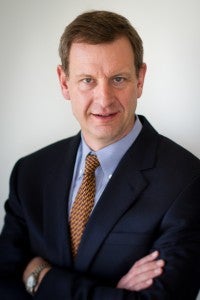Energy Efficiency Financing Blog Series
By: Brad Copithorne, EDF’s Energy & Financial Policy Specialist
 Energy efficiency is the fastest, most cost-effective way to reduce greenhouse gas (GHG) emissions in the United States. In many cases, energy efficiency (“EE”) projects can provide extremely attractive financial returns. Using data from a 2009 McKinsey study, EDF estimates that there are at least $40 billion of investment opportunities for EE projects in commercial buildings that will provide annual returns in excess of 20%. Despite this attractive potential, few of these EE projects are being funded in commercial buildings.
Energy efficiency is the fastest, most cost-effective way to reduce greenhouse gas (GHG) emissions in the United States. In many cases, energy efficiency (“EE”) projects can provide extremely attractive financial returns. Using data from a 2009 McKinsey study, EDF estimates that there are at least $40 billion of investment opportunities for EE projects in commercial buildings that will provide annual returns in excess of 20%. Despite this attractive potential, few of these EE projects are being funded in commercial buildings.
Over the past 12 months, EDF has engaged in an extensive dialogue with dozens of key industry participants to determine the barriers that are preventing development of this market. We spoke with leading owners of real estate, lenders, institutional investors, EE project developers, academics and other nonprofits. Based on this work, EDF has identified three primary market barriers that are preventing investment in EE projects for commercial buildings (for further details, see our recent white paper Show Me The Money: How Energy Efficiency Financing Makes Dollars And Sense):
1) Lack of debt capacity – Most commercial buildings cannot borrow additional funds and/or have a first mortgage that includes a limitation on additional indebtedness that prevents incremental borrowing.
2) Split incentives – Under the terms of most commercial leases, tenants pay for many operating expenses including energy costs. Landlords, however, must absorb most capital expenses. For an EE project this may mean that the landlord pays for the project but tenants capture the bulk of the savings.
3) Lack of confidence in projected energy savings – Many building owners and lenders are skeptical that EE projects will achieve projected energy savings.
Energy Services Agreement – Part of the Solution
EDF has been working closely with several entrepreneurs to develop and promote a financing structure that may solve the debt capacity, split incentive and projection of savings barriers. The structure, known as an Energy Services Agreement (“ESA”), allows an investor to agree to provide energy to a building at a price based on the building’s historical costs. The investor pays for EE upgrades and then uses the savings to provide a return on investment.
For example, imagine a building that currently pays $100,000 per month for electricity and an investor that spends $2MM to reduce the monthly expense to $60,000. The investor collects the $40,000 in monthly savings for 6 years in order to generate a return on invested capital. From the building owner’s perspective, all payments are operating expense so they can be passed directly to tenants (solves split incentive) and the building incurs no additional debt. The investor takes the risk that the project may not generate expected savings.
We have been working closely with several companies in this space, including Transcend Equity, Metrus Energy, Green Campus Partners, Serious Energy, Abundant Power, Sustainable Development Capital and GEAR Energy. Each of them has a slightly different structure and/or target market, but EDF is optimistic that these companies, among others, will be able to change how energy efficiency retrofits are financed for commercial buildings.
Innovations in Energy Efficiency Finance Conference
Citi and EDF are co-hosting a daylong conference on energy efficiency finance on September 20, 2011 to examine innovative financing solutions for energy efficiency projects in the commercial, residential and public sectors. Stay tuned.









